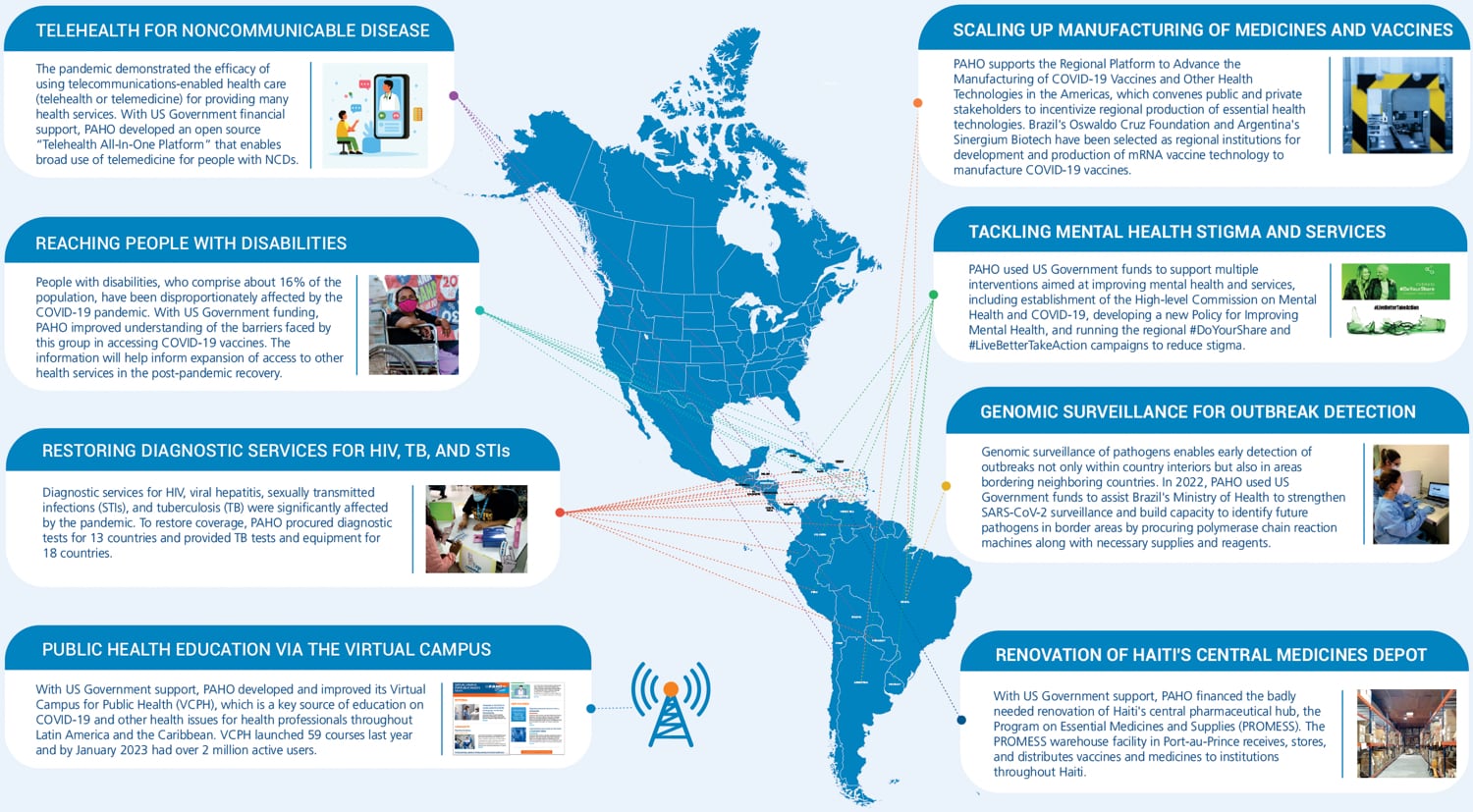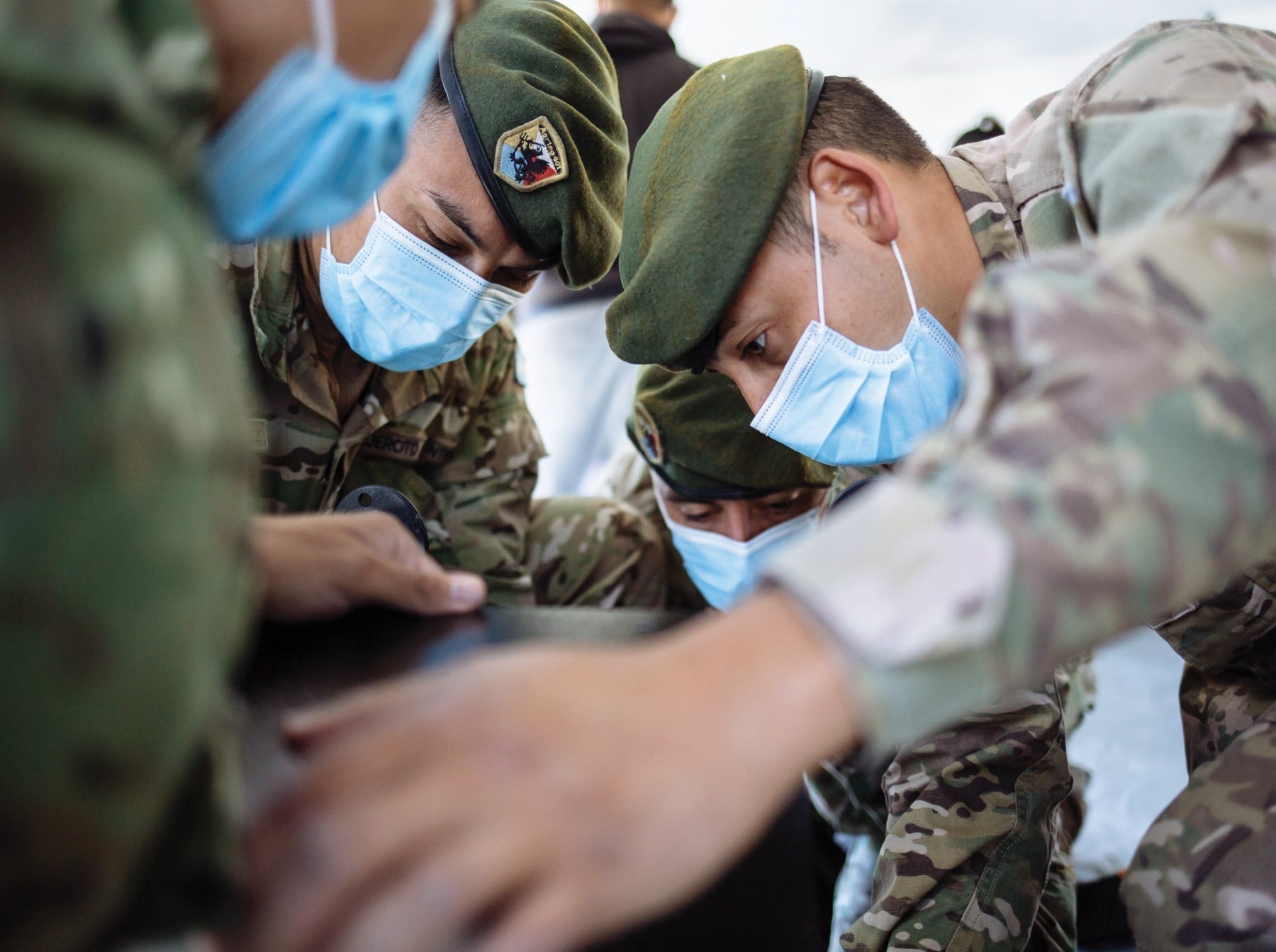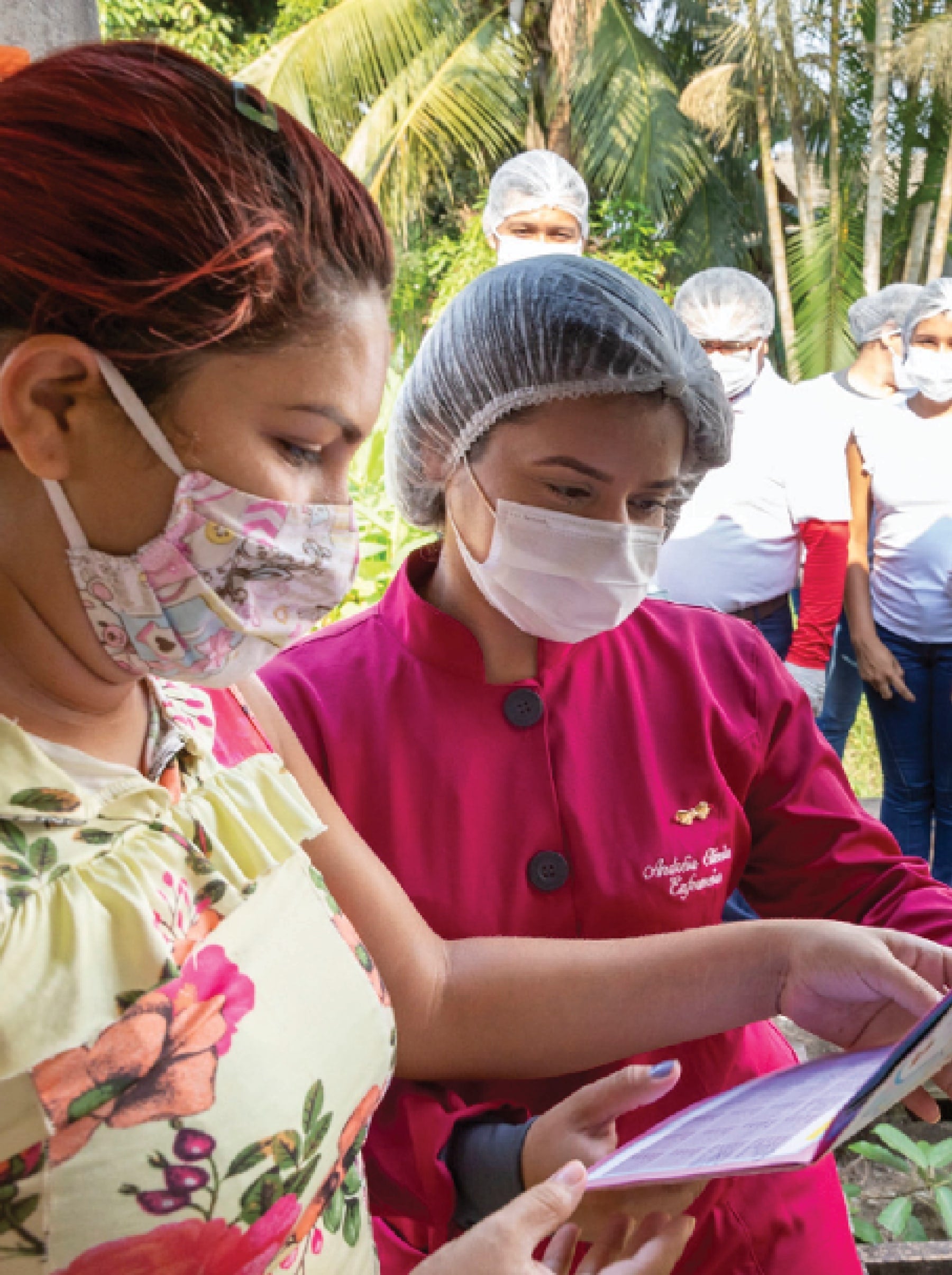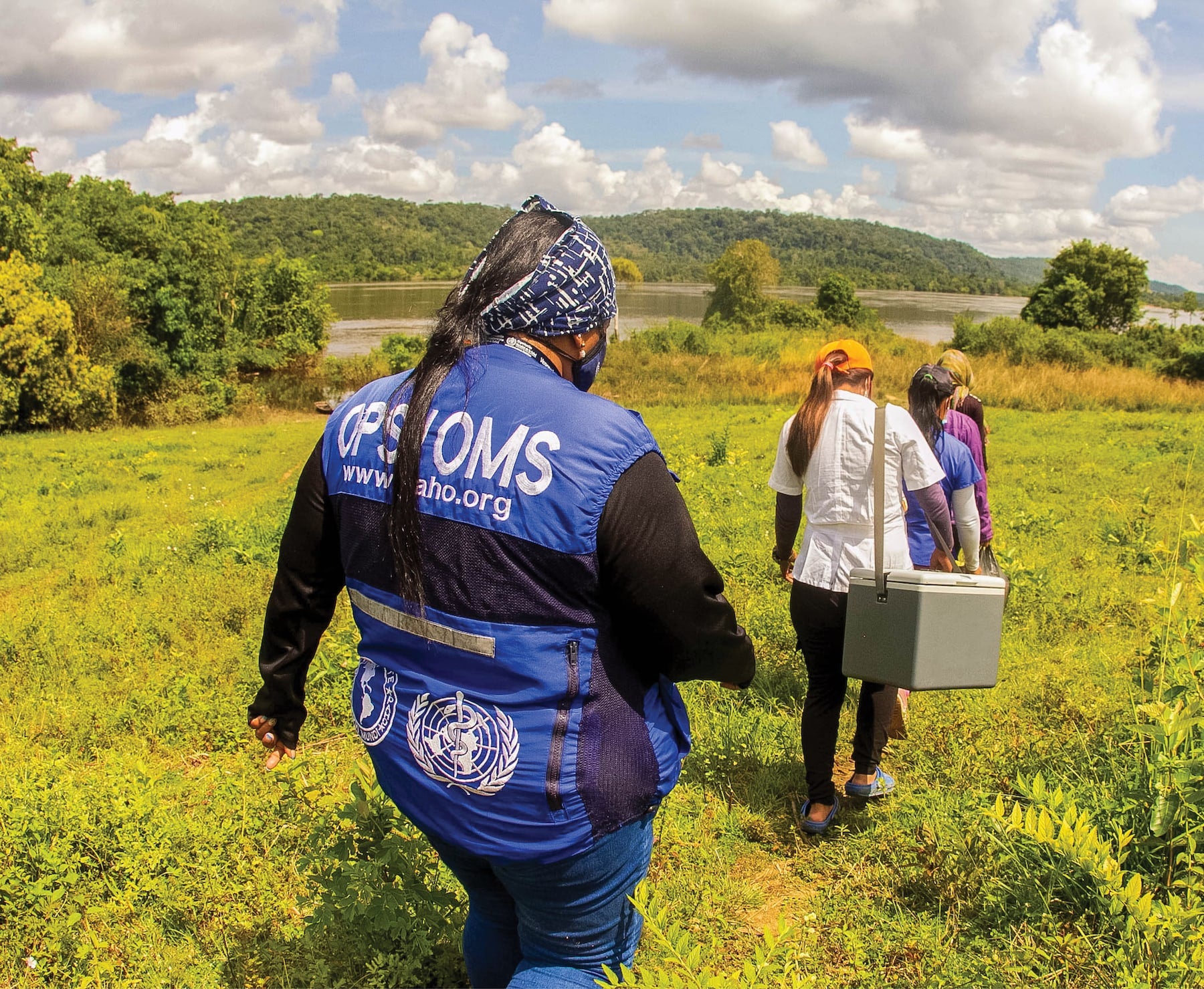During 2022, the extent of COVID‑19’s damage to routine health services and outcomes became clear, leading PAHO to prioritize interventions that restore lost capacity and provide a foundation for recovery.
When looking at the broad health system impacts of COVID‑19, the past three years’ pandemic exceptionalism starts to merge with a harsh new reality. COVID‑19 hit this Region at a time when many important health trends were already moving in the wrong direction. As the pandemic has progressed, these underlying challenges have not been resolved. Inevitably, they worsened.
For this reason, a crucial component of PAHO’s COVID‑19 response has been directed toward health problems our technical experts predicted would become much more urgent in the pandemic’s wake. Chief among these is the Region’s mental health crisis. Against a global trend toward decreasing suicide mortality – a key marker of mental health and one of only two indicators selected for assessing progress toward target 3.4 of the Sustainable Development Goals – the Region of the Americas recorded a disturbing upward increase of 17% between 2000 and 2019. The rest of the world went down by 36% in the same time frame.
In this context, the stress of a global pandemic and its mitigation measures, which in many countries included harsh restrictions on movement, total lockdowns, school closures, and forced disruptions to economic activity, exacted a troublesome toll. For health workers, the consequences were especially severe. The PAHO-supported HEROES study (the COVID‑19 HEalth caRe wOrkErs Study) revealed high rates of depressive symptoms, suicidal ideation, and psychological distress among health workers in several countries of the Region that began to climb soon after the pandemic began. The situation was exacerbated by widespread disruptions to mental health services in 72% of countries, as shown by the findings of the WHO and PAHO PULSE surveys.
Aside from mental health, the pandemic aggravated existing access barriers to many other kinds of health services and created new ones. Many countries reported challenges related to human resource shortages or skills deficits, supplies and equipment shortages, and overwhelming demand. While the targeted investments in COVID‑19 vaccination delivered impressive results, the pandemic’s broad effects on health system function led to disruptions in routine immunization services. Coverage rates for childhood vaccinations are now at their lowest point in 10 years.
Communicable diseases, too, are showing negative trends. Tuberculosis (TB) incidence and mortality rates are on the rise: deaths increased by an estimated 5000 (18.5%) in 2021 compared to 2020 due to the COVID‑19 pandemic. There are also long-term upward trends in HIV infections, syphilis, and severe outbreaks of arboviral diseases including dengue, chikungunya, and Zika.
Looking at the big picture, it is clear that the COVID‑19 pandemic has not only been devastating for its immediate impacts. It has also provoked a crisis in public health in the Region. Mitigation of the myriad consequences, which are only now becoming clear, requires a tremendous, coordinated effort that rivals the pandemic response in scope. For our part, PAHO has committed to strengthening roll out of our landmark renewal of the Essential Public Health Functions (EPHF), to boost leadership, stewardship, and governance, improve policy, regulatory capacity, human resources, financing, monitoring, evaluation, and accountability across the board. We are also heavily investing in the use of digital solutions to enhance access to health services, building on those tools whose value was proven during the COVID‑19 pandemic, and championing the skills development of public health cadres across the Region through our Virtual Campus, which also proved its worth during the pandemic.
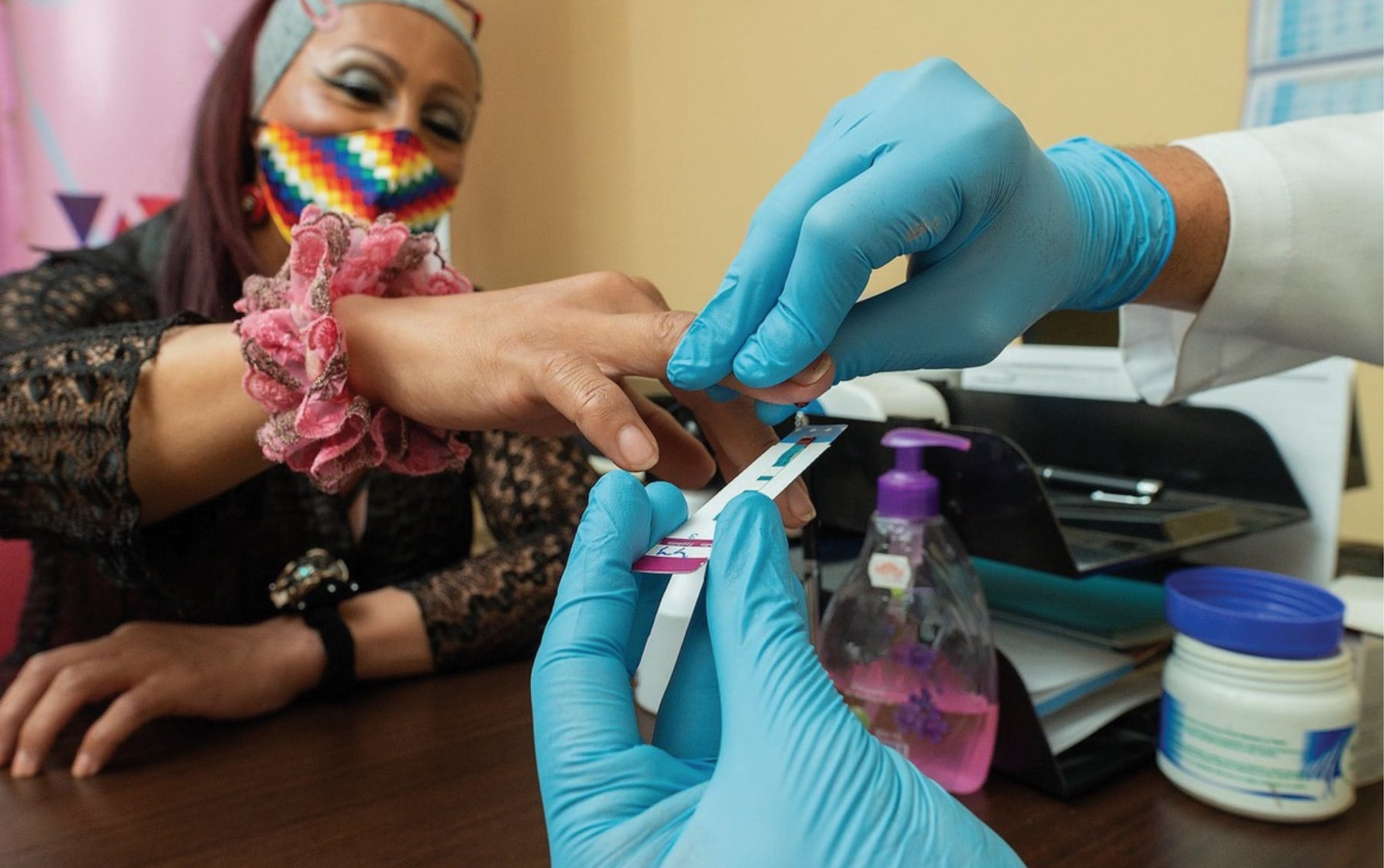
PAHO’s support has been vital for maintaining HIV testing services and other essential health programs which have been negatively impacted by the COVID‑19 pandemic.
However, it is only with a clear focus on addressing COVID‑19’s broad health system impacts that we will prevent pandemic-related service losses and negative health outcome trends from becoming entrenched in the longer term. The one huge benefit resulting from the pandemic is the data we now have show more clearly than ever where our weaknesses are. We did not have such compelling data in the past. Simply having the information to pinpoint where and why COVID‑19 vaccination campaigns have hit barriers is extremely valuable knowledge. We must not lose the opportunity it gives us to act.
Selected Activities and Results: Health System Impacts
Strengthening Health Systems
During 2022, PAHO placed renewed emphasis on the EPHF, which refer to the capacity of public health authorities to strengthen health systems and guarantee the right to health for everyone. We continued our implementation of the EPHF evaluation and strengthening exercise for countries and provided online courses on execution. Countries that have completed the exercise are subsequently expected to compile and use EPHF action plans in the development of national health plans to close gaps in the capacity of health systems, and estimate the time and resources necessary to do so.
Digital Transformation and Telehealth
The pandemic demonstrated the efficacy of using telecommunications-enabled health care (telehealth or telemedicine) not only in the context of COVID‑19 but also for providing more generalized services such as treatment of noncommunicable diseases. We continue to support countries to expand the use of these tools and incorporate them into routine care and follow-up for a greater variety of conditions. With US Government financial support in 2022, PAHO developed an open source “Telehealth All-In-One Platform” that enables broad use of telemedicine for people with noncommunicable diseases. It provides remote and timely virtual consultations for patients who live in areas with limited access to health care services or for other reasons cannot receive in-person care. Related products including a readiness assessment, updated policies, regulations, guidelines, and simulator training were also developed and launched.
“Only a clear focus on addressing COVID-19’s broad health system impacts will prevent pandemic-related service losses… becoming entrenched”
Virtual Public Health Education
With US Government support, PAHO strengthened its Virtual Campus for Public Health (VCPH), which is a key source of education on COVID‑19 and other health issues for health professionals throughout Latin America and the Caribbean, and even globally. The VCPH launched 59 courses during 2022, some of which were translated into the four PAHO languages. Another 40 courses were developed for in-country technical cooperation. A total of 446 136 new users were registered in 2022 and there were 1 323 816 new enrollments in courses. By January 2023, the total number of users had reached 2 125 237 with an impressive 4 754 791 course enrollments.
Mental Health
The pandemic generated an alarming rise in mental health conditions in the Americas. PAHO used US Government funds to support multiple programs and campaigns aimed at improving mental health and mental health services. These efforts include supporting the High-Level Commission on Mental Health and COVID‑19 to provide guidance on strengthening mental health systems and services during and after the COVID‑19 pandemic, and developing a new regional Policy for Improving Mental Health, adopted during the 30th Pan American Sanitary Conference in September 2022.
Communicable Diseases
The disruption of essential health services amid the pandemic has greatly affected services for HIV, viral hepatitis, sexually transmitted infections (STIs), and TB. The pandemic reversed years of progress in the fight to end TB. In 2020 in the Americas, there were 3000 more TB deaths than in 2019 – the first time an increase has been recorded in over a decade – and incidence of new infections has stopped its downward trend. In addition, TB case notification fell by 16%. In 2021, some of that lost ground was recovered, as more people were diagnosed with the disease and, therefore, notified that they needed treatment. With US Government support in 2022, PAHO procured tests and equipment to help countries recuperate diagnostic capacity and provided technical cooperation to close TB treatment gaps in 18 countries. PAHO’s support included procurement of 778 380 diagnostic tests for HIV, STIs, and viral hepatitis and technical support to keep testing strategies aligned with WHO recommendations.
Routine Immunization Coverage
Prior to the pandemic, rates for immunization against vaccine-preventable diseases were already declining due to long-standing issues related to national political situations, security challenges, programmatic bottlenecks, and limited resources. During the pandemic, coverage fell to historic lows. In 2022, PAHO used US Government funding to support country efforts to restore and strengthen national immunization programs, including the procurement and delivery of 5.8 million doses of bivalent oral polio vaccine (bOPV), which protects against poliovirus types 1 and 3, the BCG vaccine (TB), the DTP vaccine (diphtheria, tetanus, and pertussis), the MMR vaccine (measles, mumps, and rubella), and diphtheria antitoxin.
Access Barriers for Vulnerable Groups
People from vulnerable groups, e.g., people with disabilities, those living in poverty, indigenous and Afro-descendant communities, and people living in geographically remote areas, have all been disproportionately affected by the COVID‑19 pandemic. Furthermore, they are less likely to get vaccinated because of lack of access to information as well as anxiety about the safety of vaccines. With US Government funding in 2022, PAHO improved understanding of the vulnerabilities and barriers affecting access to COVID‑19 vaccines. The project focused on generating solutions by increasing the availability and accessibility of information about COVID‑19 vaccines and other health services. Findings from the work will feed into efforts to restore lagging immunization coverage for other conditions.
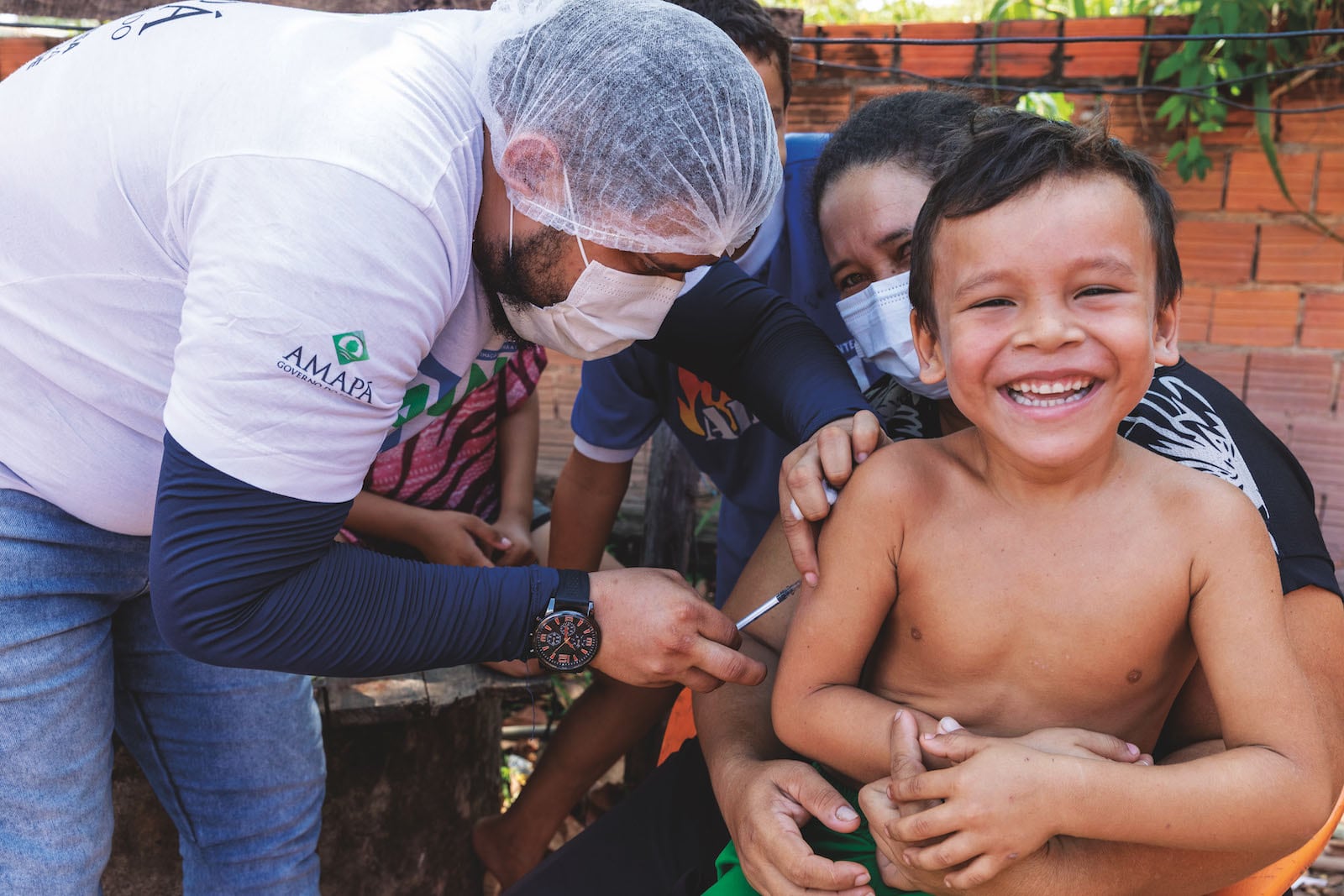
A boy from a riverside population in northern Brazil receives a measles vaccination. Rates for immunization against vaccine-preventable diseases were already declining before the pandemic, but during 2021 immunisation coverage rates reached historic lows across the Region. In 2022, PAHO used US Government funding to support country efforts to restore and strengthen national immunization programs to address backsliding resulting from COVID-19.

